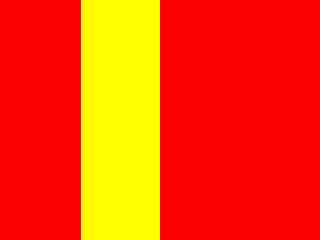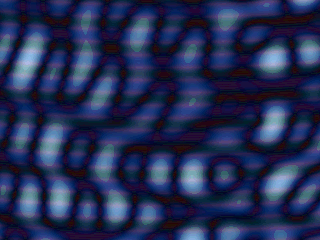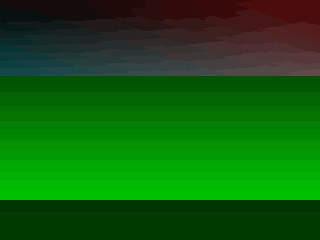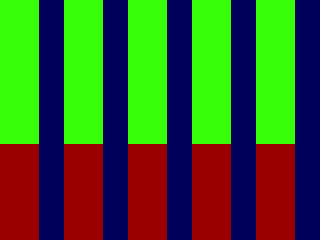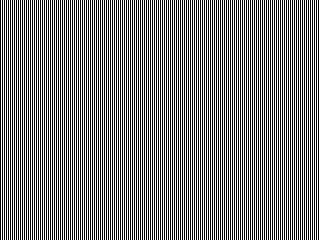Prototyping raw image sequence assignment (2013)
Assignment: In Python, following the techniques shown in the Raw image and Raw image sequence examples, create a 1 second long animation by generating 25 frames of an image sequence and converting them to a GIF. Use just the basics: loops, variables, and if statements.
Rules:
- The code should be "pure" python (just using the standard libraries of python such as struct).
- The code should be no more than 50 lines.
- The images should be 320 x 240 pixels in size.
Results
To be posted / linked to here. Please post both your code (again, PURE python -- no libraries and less than 50 lines) + the resulting image (converted to GIF and uploaded to the wiki).
Luisa
import struct, sys
width = 320
height = 240
header = struct.pack("<BBBHHBHHHHBB",0,0,2,0,0,8,0,0,width,height,32,1<<5)
totalframes = 25
for frame in xrange(totalframes):
out = open("frame%04d.tga" % frame, "wb")
out.write(header)
for y in xrange(height):
for x in xrange(width):
r = (1.0-(float(frame)/totalframes))*255
g = 0
b = 0
a = 255
if y < 32 and y > 100:
a = 35
b = 125
if x > 80 and x < 160:
g = r
out.write(struct.pack('B', b))
out.write(struct.pack('B', g))
out.write(struct.pack('B', r))
out.write(struct.pack('B', a))
print r
out.close()
Lucia
import struct, sys
width = 320
height = 240
xWhite = 0
header = struct.pack("<BBBHHBHHHHBB",0,0,2,0,0,8,0,0,width,height,32,1<<5)
totalframes = 25
for frame in xrange(totalframes):
frame = frame+1
out = open("frames/frame%02d.tga" % frame, "wb")
out.write(header)
for y in xrange(height):
for x in xrange(width):
xWhite = xWhite +1
if (frame != 1 and xWhite%frame == 0):
r = 255
g = 255
b = 255
a = 255
else:
r = 0
g = 0
b = 0
a = 255
out.write(struct.pack('B', b))
out.write(struct.pack('B', g))
out.write(struct.pack('B', r))
out.write(struct.pack('B', a))
out.close()
A variation (that's actually the original idea - the previous code was 'accidental'):
import struct, sys
width = 320
height = 240
header = struct.pack("<BBBHHBHHHHBB",0,0,2,0,0,8,0,0,width,height,32,1<<5)
totalframes = 25
for frame in xrange(totalframes):
out = open("last/frame_%02d.tga" % frame, "wb")
out.write(header)
for y in xrange(height):
for x in xrange(width):
#if (x%10==0 and x == frame*10):
#line above is redundant either one condition or the other would be enough, so
if ( x == frame*10):
r = 255
g = 255
b = 255
a = 255
else:
r = 0
g = 0
b = 0
a = 255
out.write(struct.pack('B', b))
out.write(struct.pack('B', g))
out.write(struct.pack('B', r))
out.write(struct.pack('B', a))
out.close()
Tamas
________________________________________________________________________________________________________________________________________________
Mihail
Lídia
import struct, sys
import random
width = 320
height = 240
header = struct.pack("<BBBHHBHHHHBB", 0, 0, 2, 0, 0, 8, 0, 0, width, height, 32, 1 << 5)
totalFrames = 25
largeColumns = (width/5) - 25
smallColumns = 25
for frame in xrange(totalFrames):
out = open("frame%04d.tga" % frame, "wb")
out.write(header)
attempt = random.randint(height/7, height/1.2)
attempt1 = random.randint(10,90)
cor = random.randint(55,255)
for y in xrange(height):
for x in xrange(5):
for n in xrange(largeColumns):
r, g, b, a = 0, 0, 0, 255
if y <= attempt:
r, g = 55, 255
b = (frame + 1) * 10
else:
r = 155
out.write(struct.pack('B', b))
out.write(struct.pack('B', g))
out.write(struct.pack('B', r))
out.write(struct.pack('B', a))
for x in xrange(smallColumns):
r, g, b, a = 0, 0, 0, 255
if y < attempt1:
b = 155
if y > attempt1 and y < 200:
b = cor
else:
b = 90
out.write(struct.pack('B', b))
out.write(struct.pack('B', g))
out.write(struct.pack('B', r))
out.write(struct.pack('B', a))
out.close()

